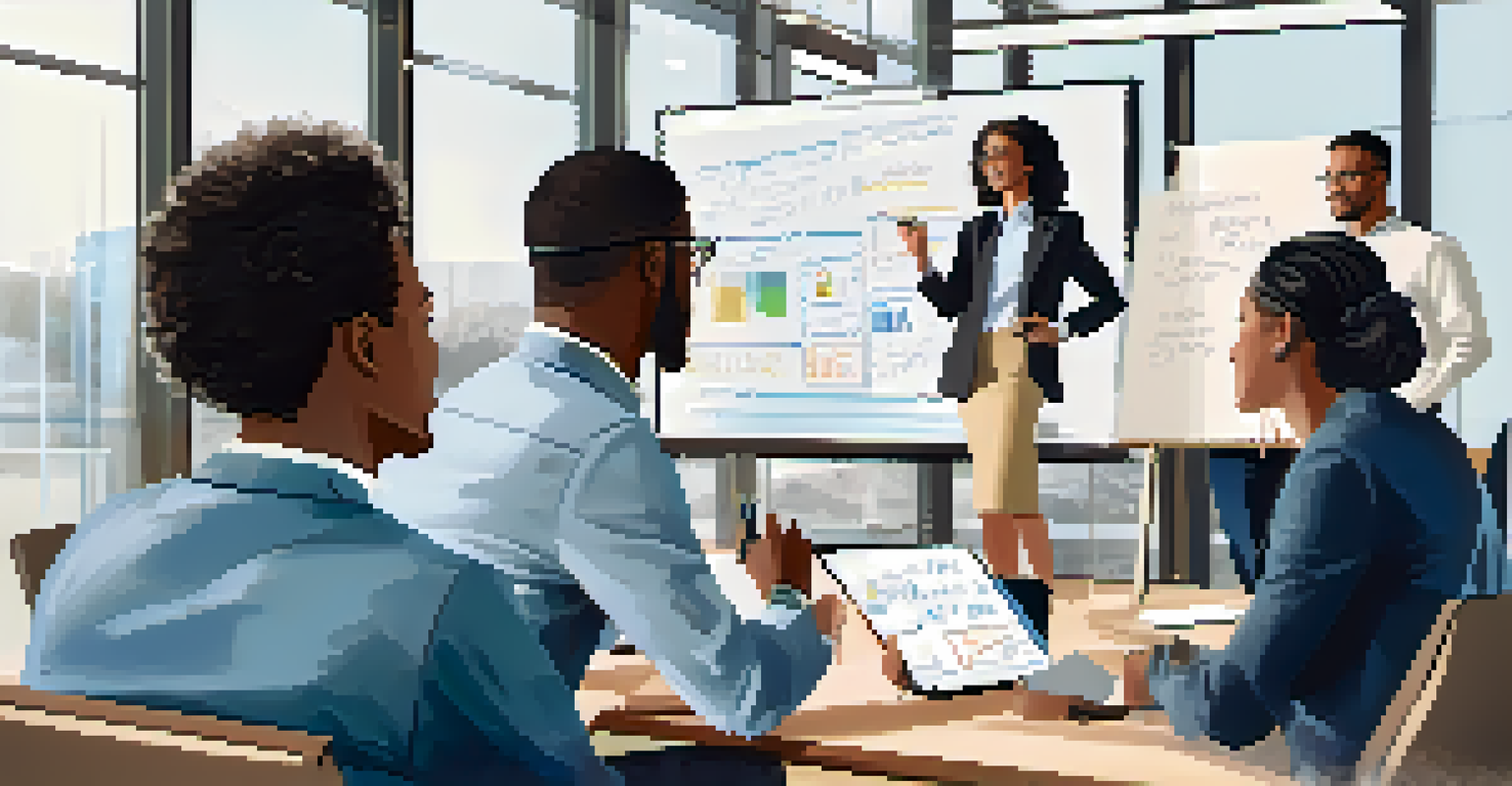Follow-Up Strategies: Keeping Virtual Connections Alive

Understanding the Importance of Follow-Ups
In today's digital age, building connections online can feel fleeting. Following up is crucial to transform a one-time interaction into a lasting relationship. Think of it as watering a plant; without consistent care, it may wither away.
The most important thing in communication is hearing what isn't said.
When you take the time to check in, it shows that you value the relationship and appreciate the other person's time. This effort can lead to opportunities for collaboration, support, or simply a deeper friendship. Engaging in follow-ups can help keep those connections vibrant and growing.
Establishing a habit of follow-ups can also enhance your networking skills. Just like a good recipe, it requires the right ingredients—timeliness, sincerity, and relevance—to create a lasting impact. The more you practice, the easier it becomes to maintain these virtual ties.
Choosing the Right Medium for Follow-Ups
The medium you choose for follow-ups plays a significant role in the effectiveness of your message. Email, social media, and instant messaging all have distinct tones and advantages. Consider the preferences of the person you’re reaching out to—some may prefer a quick text, while others might appreciate a thoughtful email.

For instance, if you recently connected with someone on LinkedIn, sending a personalized message through that platform can reinforce the connection. On the other hand, if you met at a networking event, a follow-up email might be more appropriate to remind them of your conversation. Tailoring your approach helps ensure your follow-up feels relevant and considerate.
Follow-Ups Foster Lasting Connections
Regular follow-ups are essential for transforming fleeting interactions into meaningful relationships.
Additionally, think about the context of your relationship. A casual acquaintance might appreciate a light-hearted message, while a professional connection may expect a more formal tone. By aligning your medium and message with your relationship, you set the stage for an effective follow-up.
Timing Your Follow-Ups for Maximum Impact
Timing is everything when it comes to follow-ups. Reaching out too soon can feel pushy, while waiting too long might lead to being forgotten. A good rule of thumb is to follow up within a week or so after your initial interaction, while the connection is still fresh.
Follow up and follow through until the task is done.
For example, if you had an engaging conversation at a webinar, consider sending a follow-up message within a few days. This allows you to reference specific points from your discussion, making your message feel personalized. It’s a gentle nudge that reinforces your interest without overwhelming the other person.
Moreover, being mindful of the recipient's schedule can enhance your follow-up strategy. If you know they’re busy with work deadlines, it might be beneficial to wait a bit longer. By respecting their time, you increase the likelihood of a positive response to your outreach.
Crafting Personalized Follow-Up Messages
A personalized follow-up message goes a long way in demonstrating your genuine interest. Instead of sending a generic template, take a few moments to reference something specific from your previous interaction. This could be a shared interest, a project they mentioned, or even a compliment about their insights.
For instance, if you discussed a book during your last chat, you might say, 'I just finished that book you recommended—what did you think of the ending?' This not only keeps the conversation flowing but also shows that you were actively listening and engaged.
Personalization Enhances Engagement
Crafting personalized messages demonstrates genuine interest and strengthens the connection with the recipient.
Personalization makes your follow-ups memorable and engaging. It fosters a sense of connection and encourages the other person to respond, which is the ultimate goal of your outreach. Remember, a little effort in crafting your message can yield significant rewards in nurturing relationships.
Utilizing Social Media for Effective Follow-Ups
Social media platforms are a goldmine for maintaining virtual connections. Not only can you easily reach out to someone, but you can also engage with their content, fostering a sense of community. When you like, comment, or share their posts, you stay on their radar without needing a formal follow-up message.
For example, if a connection shares an article related to your industry, take a moment to comment on it. This shows your ongoing interest in their work and provides a natural segue for a follow-up conversation later. It’s a more casual way to keep the dialogue open without the pressure of a direct message.
Additionally, social media can help you track significant events in your connections' lives, such as job changes or personal milestones. This information can serve as excellent conversation starters when you decide to reach out, making your follow-ups feel timely and relevant.
Following Up with Gratitude and Appreciation
Expressing gratitude is a powerful strategy in follow-ups. Whether you’re thanking someone for their time, insights, or assistance, acknowledging their contribution strengthens your connection. A simple 'thank you' can make the other person feel valued and appreciated.
For instance, if someone offered you advice during a meeting, sending a follow-up message expressing your gratitude can deepen your relationship. You might say, 'I really appreciated your insights yesterday; they helped me see things from a new perspective.' This reinforces the bond and encourages future interactions.
Timing and Medium Matter
Choosing the right timing and communication medium is crucial for effective follow-ups and ensuring the message resonates.
Moreover, gratitude can be contagious. When you express appreciation, it sets a positive tone for your relationship, paving the way for more open communication in the future. By making it a habit to include gratitude in your follow-ups, you create a welcoming environment for ongoing dialogue.
Using Events and Webinars to Nurture Connections
Attending industry events or webinars is an excellent way to rekindle connections. After participating in an event, consider reaching out to fellow attendees or speakers with a follow-up message. This can serve as a reminder of your shared experience and open the door for further discussions.
For instance, if you attended a panel discussion, you might follow up with a fellow participant by saying, 'I enjoyed our conversation at the panel last week—what were your thoughts on the main topic?' This approach not only reflects your interest but also encourages a deeper conversation based on a mutual experience.

Additionally, events provide valuable opportunities for networking. By actively participating and following up with new contacts, you can expand your professional circle and foster relationships that can lead to future collaborations or insights. It’s a win-win for everyone involved.